- About Us
-
Who we are
-
- Publications
-
- ADPC Academy
-
MediaADPC'S NEWS
Enhancing disaster risk reduction through gender, science and new partnerships Enhancing disaster risk reduction through gender, science and new partnerships
20 - 21 Sep 2016
Bangkok, Thailand
ADPC hosted the Power, vulnerability and agency in disaster risk reduction: A knowledge exchange for sustainable development in Asia from 20–21 September in Bangkok.
The learning exchange brought together disaster management, women/social affairs departments, women’s groups, and geographic information system (GIS) experts to promote better linkages and synergies between disaster risk reduction and gender initiatives to promote sustainable development.
The event also aimed to create national communities of practice encouraging stakeholders to work together for Gender and GIS synergy in the future, such as by using gender-disaggregated data to identify vulnerable populations within a community.
SERVIR-Mekong complimented this initiative with its small grants program launched at the event, which aims to promote the research of climate change, gender and GIS in the Lower Mekong Region.
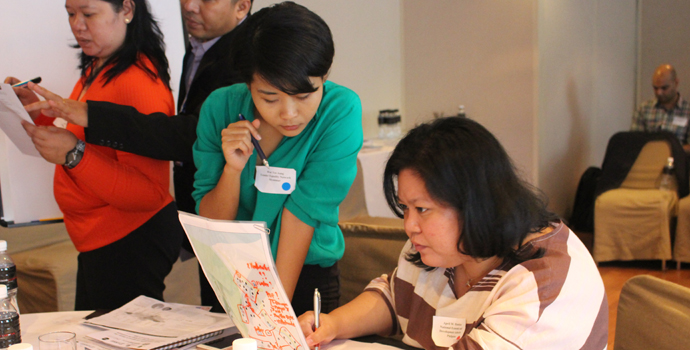
Participants compare two maps, one with gender sensitive data and one without, to better understand how gender-blind data and
information can leave critical population groups vulnerable in disaster response.
About 60 participants from eight countries in the region joined the interactive sessions to build their capacity in applying gender and GIS to their work, while learning from each other in the process.“Disaster Management is not a task of a single organization, or a single person, it is a multi-sectoral task,” said Mr. Prak Kim Hong, Director of Emergency Coordinating Center and ASEAN Affairs at the National Committee for Disaster Management of Cambodia. “I think that having the different sectors attending this workshop was very important,” he continued.
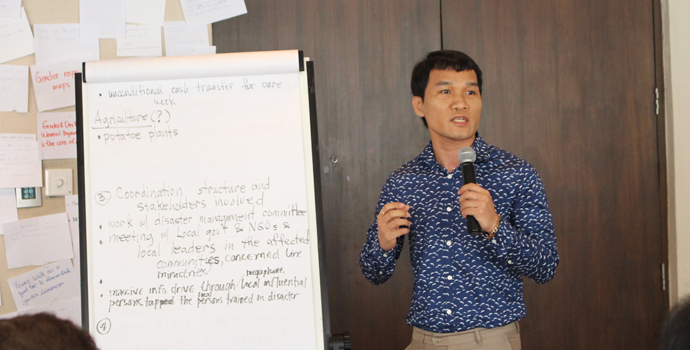
Prak Kim Hong shares the disaster response plan for a community affected by flooding that he and his group created.
Group work sessions throughout the event combined participants from different sectors and the variety allowed them to apply their unique field of expertise to the task at hand. This was particularly useful during the session that identified entry points where GIS or Gender could be applied to risk reduction and emergency response initiatives.Mr. Prak Kim Hong says he already has plans to propose a GIS and gender equality training to top management and begin collaborating more with the Ministry of Women’s Affairs to integrate gender equality into disaster risk reduction.
“Conducting the meeting is the best way to start, then we can create a technical team and begin having more specific discussions,” says Mr. Prak Kim Hong.
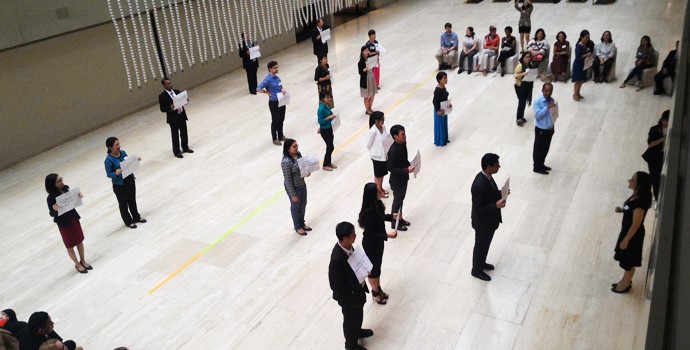
The Power Walk activity illustrates how social status and a person's situation (e.g. employment status, literacy, wealth, gender) can affect resilience and cause some to get ahead while others are left behind.
Similarly, Dr. Pham Viet Hoa, Vice Director, Ho Chi Minh City Institute of Resources Geography, Vietnam Academy of Science and Technology (VAST), is a GIS professional who learned how gender could be applied to her work and wants to do just that.“We want to create cooperation between the gender and GIS communities to consider having gender aspects be a part of project frameworks from the very beginning,” shared Dr. Hoa. “In the future, we hope to use gender and GIS together to discover at risk areas where support is most needed,” she continued.
Lauren Childs and Georgina Crepps representatives from NASA’s DEVELOP program, which applies NASA’s earth observation technology to address community concerns like measuring soil moisture for agriculture, also attended the event.
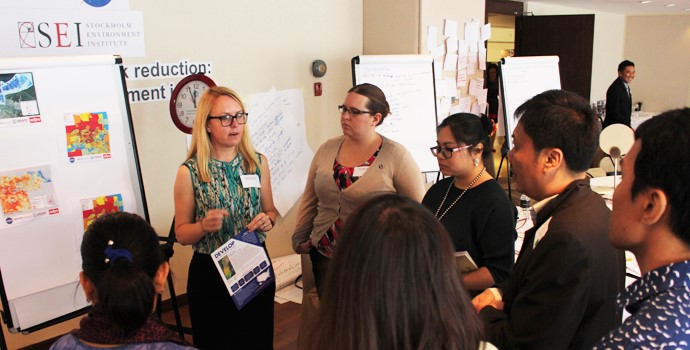
Lauren Childs (center left) and Georgina Crepps (center right) discuss NASA's DEVELOP program during the marketplace session of the event where participants and facilitators in 10 different stations presented their work related to gender and GIS.
“Through different activities, like the Power Walk, it was amazing to see how seriously people took it all and were really engaged and excited to be there,” said Ms. Lauren Childs.While participants were eager to work towards combining Gender and GIS initiatives during the event, some already having plans to combine the two disciplines upon returning home, there needed to be a way to ensure enthusiasm wasn’t lost after it ended.
“Anytime you have any event like this and everyone is so high-energy it is very easy for everyone to go back to their various corners and lose momentum,” says Ms. Childs. “It will be important to ensure there are continued venues for them to interact more to support each other,” she continued.
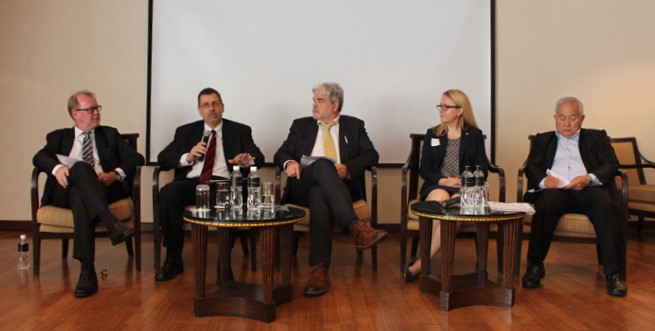
The event featured a panel session by (from left to right) Kjetil Paulsen, Norwegian Ambassador to Thailand, Todd Sorenson, Deputy Mission Director, Regional Development Mission for Asia, United States Agency for International Development (USAID), Niall O'Connor, Director, Stockholm Environment Institute's Asia Centre, Lauren Childs, NASA DEVELOP, Dr. Jingjai Hanchanlash, Executive Director a.i., ADPC, discussing the importance of gender, GIS and disaster risk reduction.
Complementing the event, The SERVIR-Mekong small grants program allows participants to act on what they learned since one of its solicitations targets Gender and GIS partnerships. This is a direct way participants can take what they learned and apply it to their work.“I think ADPC and SERVIR-Mekong are in a good position to be that driving force in being able to connect people,” said Ms. Georgina Crepps. “The small grants program [from SERVIR-Mekong] is a good way to keep up that interest and engagement,” she continued.
Applications are available to apply for the SERVIR-Mekong small grants program until 4 October 2016. Please visit the SERVIR-Mekong website for more details.
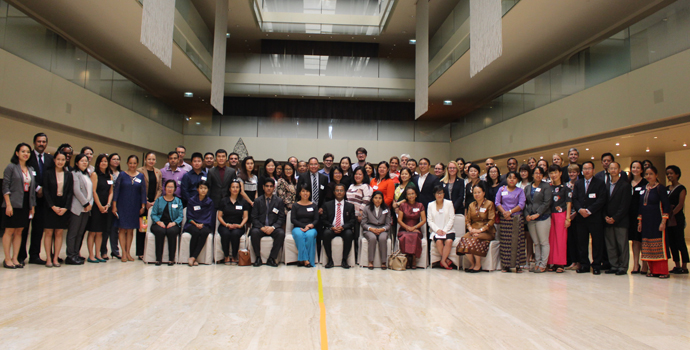
Participants and facilitators pause for a group photo celebrating the event.
A special thanksThe Power, vulnerability and agency in disaster risk reduction: A knowledge exchange for sustainable development in Asia was made possible through a grant from the Stockholm Environment Institute (SEI) through the Swedish International Development Cooperation Agency (SIDA). Additional support came from the Ministry of Foreign Affairs Norway, the United States Agency for International Development (USAID) and NASA.
Latest NewsRelated Trainings
-